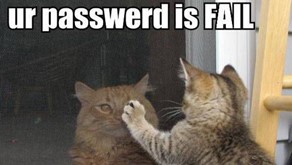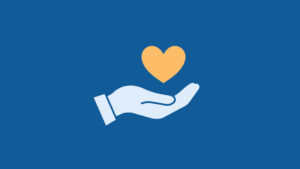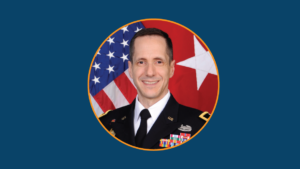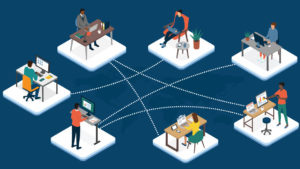What is Cognitive Surplus?
In his famous TED talk about Cognitive Surplus, Clay Shirky shares an incident in Kenya from December of 2007. There was a disputed presidential election that resulted in an outbreak of ethnic violence. A lawyer in Nairobi, Ory Okolloh, began blogging about it on her site, Kenyan Pundit. Shortly after the election and the outbreak of violence, the government suddenly imposed a significant media blackout. So, Okolloh solicited more information about what was going on from her commenters. The comments began pouring in, and Okolloh would collate them, but there was more information than any one person could manage. So, she asked for help to automate this task.
Two programmers who read her blog held their hands up and said, “We could do that,” and in 72 hours, they launched Ushahidi. Ushahidi (which means “witness” or “testimony” in Swahili) is a straightforward way of taking reports from the field, whether it’s from the web or, critically, via mobile phones and SMS, aggregating it and putting it on a map.
Enough people looked at it and found a value that the programmers who created Ushahidi decided they would make it open source and turn it into a platform. It’s since been deployed in Mexico to track electoral fraud and Washington D.C. to track snow cleanup.
Shirky credits the idea of Cognitive Surplus behind the creation of Ushahidi. According to Shirky, Cognitive Surplus has two parts:
- Time: The world’s population’s ability to volunteer and contribute and collaborate on large, sometimes global, projects. According to Shirky, the world has over a trillion hours a year to commit to shared projects.
- Tools: Primarily for collaboration. Internet, mobile phones, social media, and more.
Shirky acknowledges that not all cognitive surplus products are as helpful as Ushahidi. We also get LOL Cats (cute pictures of cats made more adorable by adding cute captions). While LOL Cats may not seem beneficial (unless you are looking for cute cat pictures), it is essential to note that it is still a creative and communal act. Freedom to contribute means freedom to contribute anything. The important takeaway is that the contributor of a LOL Cat picture has crossed a vital participation threshold.
Cognitive Surplus in an Enterprise
Can Shirky’s notion of Cognitive Surplus be applied to an enterprise? A typical enterprise has employees in between projects, not being utilized to the fullest on their current assignments for whatever reason, or motivated by creating value not just for themselves (e.g., self-learning) but for everyone in the enterprise. Cognitive Surplus encourages this resource of precious employee time for building something of value to the employees and the enterprise.
Beyond time, enterprises also need a framework that engenders participation. Such a framework would include:
- A starting point for a framework is tools for collaboration. Examples include collaboration tools like Github, Teams, and Slack.
- A collection of tasks that employees can contribute towards. These tasks don’t have to be well-defined like a product backlog. But an absence of defined tasks to choose from can significantly hamper employees from getting started. Ideas for tasks can come from ongoing projects (a nagging problem or an optimization that the product team has no time to spend on or research on upcoming features and features in an area of interest.
- Each task needs to be broken up into “byte-sized” chunks. A rule of thumb is 40 hours. This is typically an employee’s time between projects before they are pulled into their next assignment. It is also important to encapsulate the task to hide or decouple it from underlying dependencies. Doing so allows employees to contribute without spending hours or days setting up the environment before they start contributing.
- Ability to get feedback early and often is crucial to making the employees’ contribution productive. Therefore, it is essential to scale the feedback loop. The way to scale the feedback loop is to crowdsource it, i.e., get a representative from the team that suggested the task or a member of COI to pair with the employee working on the task. Even a 15-minute daily sync-up can go a long way.
- Celebrate the successful completion of a task. Recognize people’s contributions via a blog, internal communication, social media shares, and more. No matter how small the contribution, it should be recognized.
Cognitive Surplus at AIS
At AIS, we have worked to put the Cognitive Surplus to good use. Here are a few recent examples.
-
- Cameo Contributors for Value Creation projects. New hire and not yet on a project? In between projects? Our team is working to support more internal efforts by matchmaking individuals who have availability with the needs of our internal Cloud Acceleration Hub (HUB) team. The HUB is a dedicated team of AIS consultants organized to help AIS project teams deliver successful cloud services modernization projects. The HUB team consolidates knowledge and experience to provide rapid research and guidance for cloud migration and modernization projects. Cameo contributions can range from project-specific problem solving or solution reviews to contributing to IP development or internal skilling efforts. The HUB team has manageable chunks of work that they engage individuals for and mature this capability with ramp-up guides, task partners, and more.
- Creation of open-source tool ddl2dbt tool. The team wanted to automate the creation of DBT YML files based on ErWin models but had no cycles to build this tool. Cognitive Surplus made it possible to develop this tool – AppliedIS/ddl2dbt: CLI to generate DBT and dbtvault models from DDL and Source To Target Mappings (github.com).
How Do You Exercise Cognitive Surplus? Tangible and Intangible Benefits
Dean Kamen, the inventor, and entrepreneur, said, “Free cultures get what they celebrate.” In a similar vein, “Enterprises get what they celebrate.” Enterprises need to create a culture that celebrates participation, no matter how small the contribution is or how directly impactful the contribution is. The value created for the enterprise is not just a by-product of the participation; it is what they collectively make of participation.
Enterprises have hundreds of hours of participatory value up for grabs, year-in and year-out. Enterprises designed around a culture of participation and a framework for common value creation can achieve incredible results.
We have been able to integrate more individuals across the organization while providing value to the broader company. Those who have participated in these exercises have provided excellent feedback on the experience and how it gave them a positive experience with AIS, allowing them to contribute value to the company between delivery and billability. There are intangible benefits to this, including valuable impacts on culture, employee passion, and motivation. How is your organization using cognitive surplus?
First-time Feedback from Peers and Mentors
An AIS employee was invited to share his experience when participating in project work.
“I had the opportunity to work with an internal AIS HUB project earlier this year and came away with a new perspective when it came to my critical thinking. I was asked to write specific articles dealing with PowerShell, Pester, and PSScriptAnalyzer as well as a working example code to compliment the article. This was the first time in my career I had a group of Engineers and Developers providing feedback and guidance as I was producing a WiKi and code. The guidance and feedback were outstanding!
By the end of my time with the HUB team not only was my WiKi writing substantially better, but the feedback I received from the HUB team made my thought process much clearer and more refined. As a DevOps Engineer, being able to work with a client in a clear and concise manner is critical to successfully providing implementation guidelines and also results. The HUB Team took me under their wing and taught me how to be a better DevOps Engineer. My current project requires a lot of critical thinking, WiKi’s, and code blocks. I work with developers who need example code and instructions on how to get started. If I had not had the time I had with the HUB team, I would not be able to provide better documentation and code for their WiKi’s.”
– David Dracoules, AIS Cloud Infrastructure Consultant
JOIN OUR GROWING TEAM
AIS provides employees with opportunities to learn and grow in their careers. Won't you join us?








